Kramnik's foreword
Technology has forever changed the world of chess. Today’s player has access to strong sparring partners whenever you want to play (and they never get tired); encyclopaedic opening books (that really aren’t books); comprehensive games collections (that include virtually every game played by every player of note); and perfection in some endgames (that defy human understanding). As a young chess player growing up in Russia and honing my skills, I had access to none of these tools. I had to find willing opponents, annotate printed opening books, transcribe important games, and attempt to discover the mysteries of the endgames. I’m not complaining, just describing the not-so-distant past. Computers have changed so much in chess, as indeed they have transformed so much of the world today.
I was late to adopt computers into my training regime. At the beginning of my career I used computers only for their game databases. In 1995, while helping Garry Kasparov with his world championship match with Anand, I saw how important the use of computer applications were for his training. After working with Garry, I started to use computers quite regularly. However, it was mostly used for blunder checking. We were analyzing on the board and sometimes you could easily just simply blunder something, miss some cheap trick, and just make mistakes. At that time, the playing strength of the programs was quite weak, but still strong enough to embarrass us. Even Kasparov sometimes blundered in his analysis, and the computer was ruthless and impassionate about pointing out the mistakes. This was a humbling experience for a grandmaster! Simply having the ability to check for blunders was in itself a useful tool.
Then came Kasparov’s famous matches against Deep Blue. Frankly, I was not taking computers too seriously at that time. Even though I understood that it was not that simple to beat the computer, I was sure that Garry was going to win both matches. Of course I analyzed the games. I found it unsurprising that he won the 1996 match by a score of 4-2 – the games were normal and logical. The 1997 match was dominated by a lot of PR that distracted Garry (but not Deep Blue) and this may have played a role in the final result. But I'm absolutely convinced that Garry was still a much stronger player than Deep Blue. The final result was bad luck on Garry’s part, that he lost his nerves at some point. Even so, he was the better player.
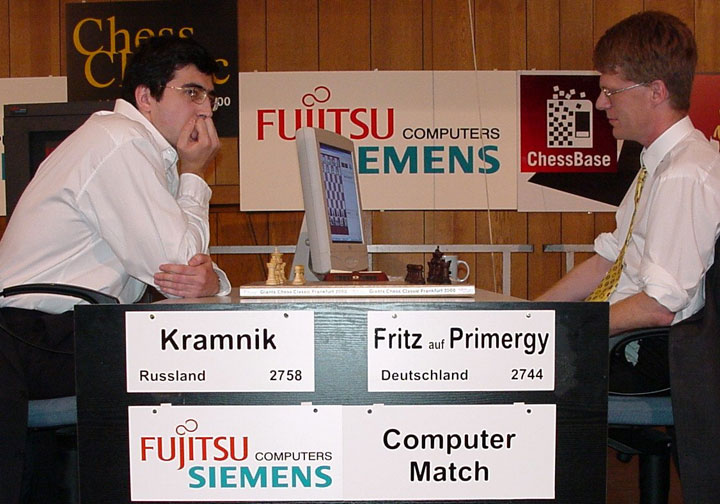
A first encounter: Vladimir Kramnik vs Fritz at the Chess Classic 1999 | Photo John Henderson
My own fights with the machines also started around that time. I don't really know when I lost my first game against a machine. I was not a big fan of playing training games with computers, but I probably lost one such game. My first tournament with a computer participant was probably a rapid chess event in Mainz around 1999. My first classical chess game against a computer was in 2000 in Dortmund. This was a grandmaster round-robin tournament and the computer’s participation was controversial. Some players were against including the machine; I didn't mind so much. I won the game in my first classical man-machine encounter.
Then I prepared for my first match against Deep Fritz, which was planned for 2001. The first step in my preparation was to analyze all the 1997 Kasparov-Deep Blue games, with Fritz running on my laptop. Just a laptop – no special chess chips analyzing 100s of millions of positions per second. To my extreme surprise, Fritz was simply playing better than Deep Blue. I was shocked. I couldn't understand how Garry managed to lose this match. When moves involved deep calculation, Fritz made the same moves as Deep Blue nine times out of ten. When a move choice was based on a positional decision, Fritz usually made a slightly better move than Deep Blue. I was puzzled – I was expecting Deep Blue to be much stronger. I was even a bit frightened that I was going to play against Fritz but with it using more computing power. After doing this analysis, I was really surprised that Gary managed to lose match to Deep Blue.
The first match with Deep Fritz actually took place in 2002. It started very well for me with two draws and two wins. I was extremely happy. But then in game five I blundered a piece in basically one move. In game six I was leading by one point and so I sacrificed material. So in the end the match was drawn and the question of whether man or machine was the better player remained open. In my second match with Deep Fritz in 2006 things did not go as well and I ended up losing.
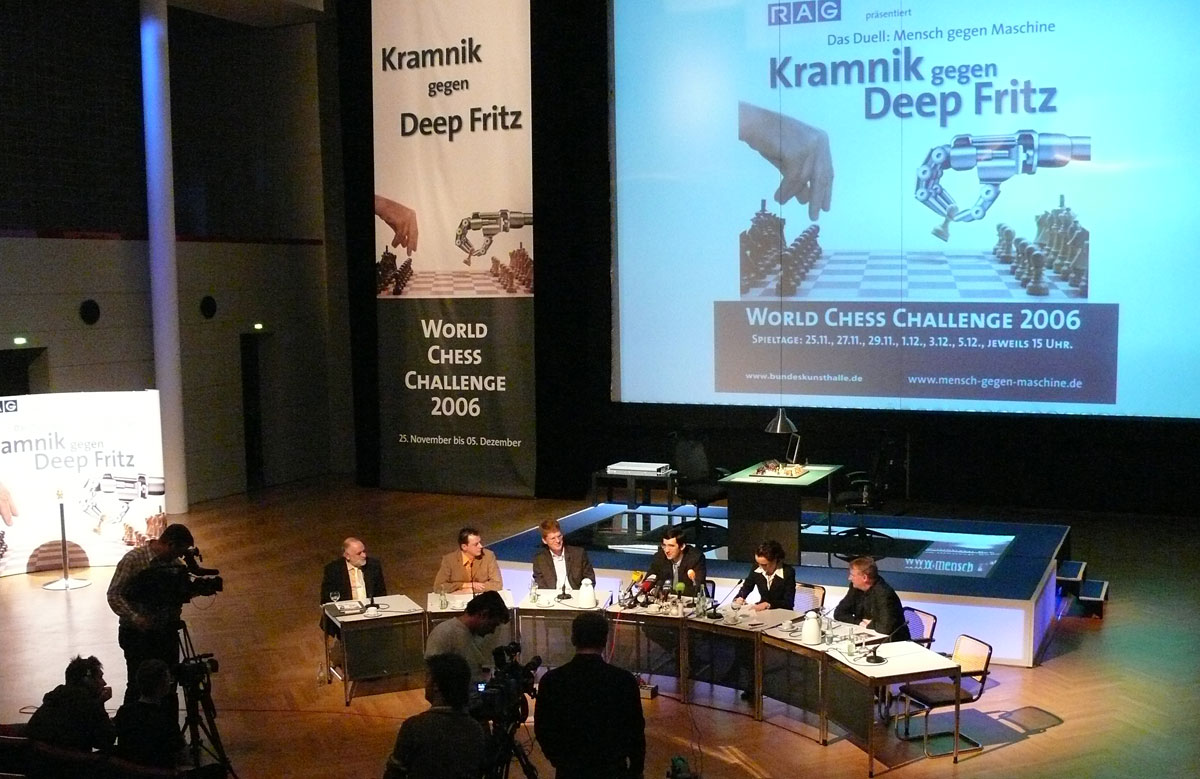
It was already difficult, but still not totally impossible, for a human to beat a top computer program. But within maybe after two or three years it became completely impossible. I think by around 2010 there was no chance anymore for the human side. In the history of computer chess, there were three chapters. First the humans were better for a long time. Then the interesting chapter, where man and machine were close in strength, lasted maybe 10 to 15 years. And now, the final chapter, computers are stronger for good.
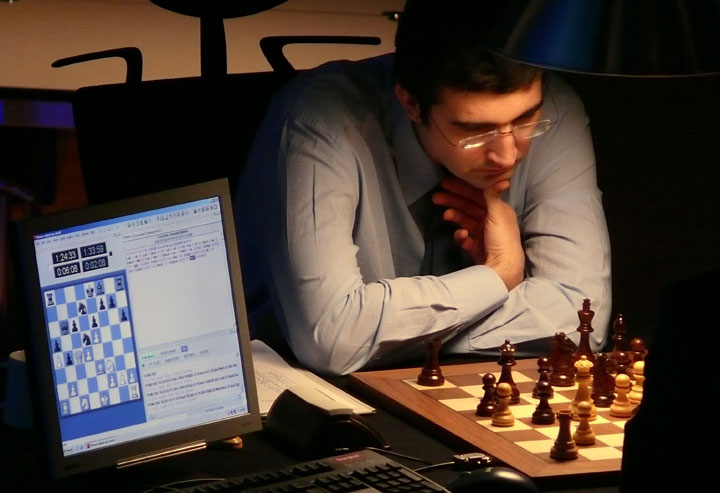
Computers have changed the game of chess, the world of chess, and even my profession. There are many pluses to what computers have brought to chess. Of most value is that they improved our understanding and appreciation of the game. The minuses are obviously that there is much less opportunity for the human side – less room to be creative. We must not forget that chess is, after all, a game between two humans. Computers may now be stronger than the human World Champion, but this achievement does not change the real value of the game: the pleasure that we humans get from playing one another at this beautiful intellectual game. And that will never change.
When I chose chess as my profession, I never imagined that one of the legacies of my career would be as a contributor to the field of artificial intelligence research. Both Garry and I put our titles and reputations on the line in the interests of Science. We both had early victories and eventually suffered painful defeats. I have no regrets. I enjoyed the challenge of playing against technology.
Grandmaster Karsten Müller and Professor Jonathan Schaeffer have managed to describe the fascinating history of the unequal fight of man against machine in an entertaining and instructive way. It evoked pleasant and not so pleasant memories of my own fights against the monsters. I hope that their work gives you as much pleasure as it has given me.
Vladimir Kramnik
14th World Chess Champion
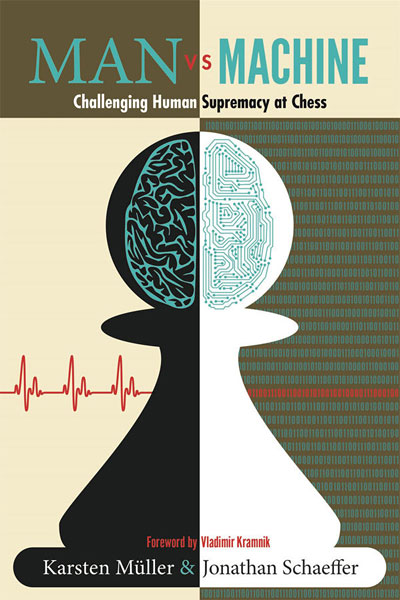 Man vs. Machine
Man vs. Machine
Technology continues to advance at a rapid pace. It may sound quaint today, but not so long ago, computers battled humans for supremacy at the game of chess. The challenge of building a computer program capable of defeating the best of human-kind at chess was one of the original grand challenges of the fledgling field of artificial intelligence. On one side were dedicated scientists and hobbyists who invested decades of effort developing the software and hardware technology; on the other side were incredibly talented humans with only their determination and preparation to withstand the onslaught of technology.
The man versus machine battle in chess is a landmark in the history of technology. There are numerous books that document the technical aspects of this epic story. The human side is not often told. Few chess players are inclined to write about their man-machine encounters, other than annotating the games played. This book brings the two sides together. It tells the stories of many of the key scientists and chess players that participated in a 50-year research project to advance the understanding of computing technology.
About the Authors
Jonathan Schaeffer is a Professor of Computing Science at the University of Alberta in Canada. For over 35 years he has been doing research in artificial intelligence using games and puzzles to demonstrate his ideas. Two of his games-related research projects have found a place in the Guinness Book of World Records. He is an internationally recognized researcher in the field of artificial intelligence and is best known for using games as his experimental test bed.
Schaeffer’s scientific paper, “Checkers Is Solved,” was a runner-up in Science’s breakthroughs of the year for 2007, was named by Nature’s readers as the ninth Most Important Achievement of the Year, and was one of the New York Times’ “Ideas of the Year.” His published works also include One Jump Ahead: Computer Perfection at Checkers. Schaeffer’s other game successes include Phoenix, a program that tied for first place in the 1986 World Computer Chess Championship, and Polaris, the first program to become competitive with world-class poker players.
International Grandmaster Karsten Müller is recognized as one of the world’s top endgame experts. He is the author of many books on endgames and chess tactics. He is the author of over a dozen chess books published by Russell Enterprises.
Man vs. Machine – Challenging Human Supremacy at Chess, by Karsten Müller & Jonathan Schaeffer. Published by Russell Enterprises – November 5, 2018; Paperback, 480 pages; Also available in Kindle and iBook editions; $34.95 Available at Chess Book dealers worldwide, including Google Books, Amazon (Paperback $34.95, Kindle $28.11), and from the European Distributor, New in Chess.
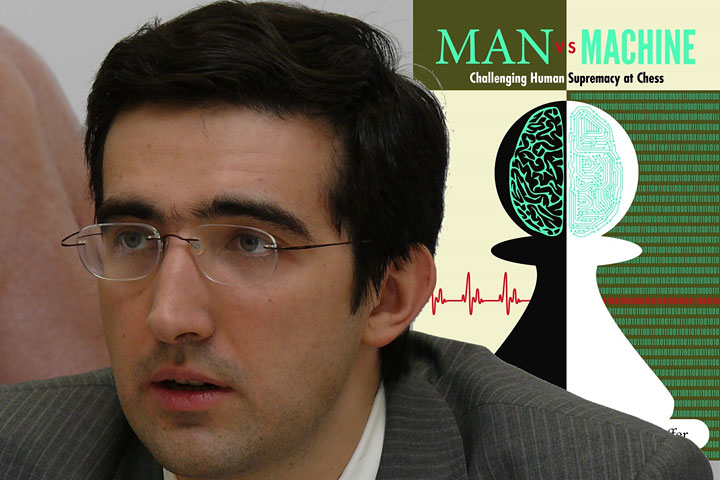




















 Man vs. Machine
Man vs. Machine




